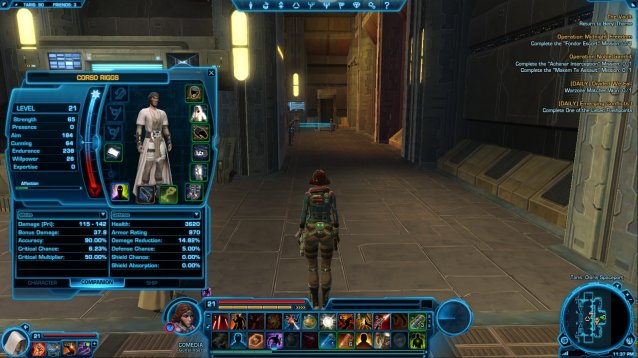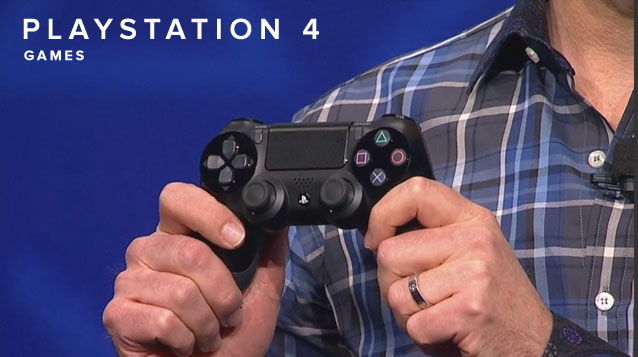


The Dynasty Warriors series is quite infamous in gaming circles. Critical opinions are split right down the middle between those who sing its praises and those who can't stand it at all, which has resulted in many never having played a single installment. I was one of those people – it's not that the series never sounded appealing, rather that the constant tide of polarizing impressions ensured that playing the latest chapter was at the low end of my priorities.
But I do love The Legend of Zelda, so when Hyrule Warriors was announced, I knew it was time to finally give Koei Tecmo's hack-and-slash buffet my undivided attention. The use of the Zelda license was clearly meant to attract players who never considered adding Dynasty Warriors to their digital diet, so there will be a lot of newcomers on board for the Nintendo-themed spin-off. As this is my introduction to the series as well, I ought to first discuss the basics of Warriors combat.
Yes, Warriors games are button mashers; Hyrule Warriors is no different. You have weak and strong attack buttons, and by alternating between the two, you'll unleash a torrent of awe-inspiring combos that literally mow down dozens of enemies at a time. After building an attack gauge, you'll be able to unleash an ultra powerful special move, during which time you are temporarily invincible. And then you repeat those actions, wearing your right thumb down for hours on end.
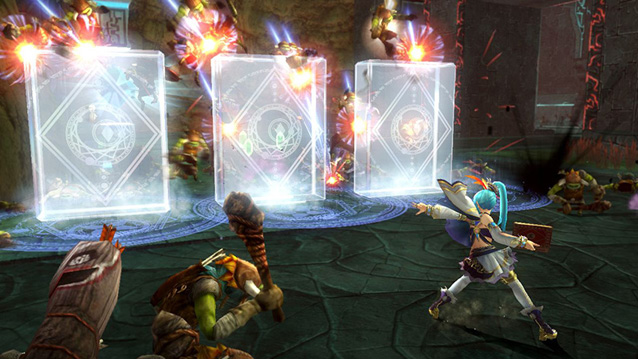
However, there's more to the gameplay than busting loose on mindless hordes numbering in the thousands. Your chief role is as leader of an NPC army, and achieving victory requires careful management of the battlefield. You have to capture strategic keeps in order to claim portions of the map, and likewise, the enemy will attempt to retake those keeps from you. Whichever side commands a keep will be able to spawn an infinite supply of troops from that location – ensuring that your compounds remain in your possession is just as important as keeping your character's health up.
Further complicating your conquest are squad captains who lead parties towards your encampments. Unlike the normal enemies who serve as little more than mindless cannon fodder that collapse in a single blow, captains will actually fight back. You could swing wildly, but you'll only chip away at their health as they block your attacks. The best strategy is to wait for a “weak point” meter to appear above their heads before strikin – once the meter is depleted, you'll execute a powerful move that causes significant damage to them and any other opponent caught in its range. Once captains are felled, the troops they were leading typically fall back.
In the context of Hyrule Warriors, the trio of Princess Zelda, her army commander Impa, and the promising young soldier Link must lead the forces of Hyrule Castle against the minions of Cia, a sorceress who has been tainted by a malevolent spirit and now desires both Hyrule and Link for herself. As part of her scheme, she opens up portals to other eras in order to gather the fragments of the spirit dwelling within. These eras are those of Ocarina of Time, Twilight Princess, and Skyward Sword, giving players an excuse to meet and eventually take control of famous characters from those games.
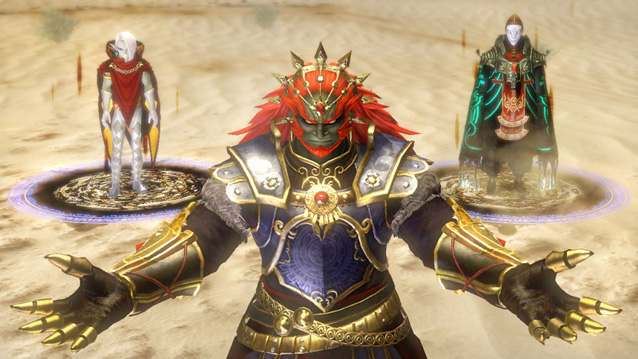
There are currently 13 playable characters, with more to be added in future DLC. You've got Link, of course, but also available are the Goron chief Darunia, the Twilight Princess Midna, the Goddess Sword spirit Fi, and others. There's also a newcomer by the name of Lana, a sorceress cut from the same cloth as Cia. But the most exciting playable roster additions are the villains – marching around the battlefield as Zelda's big bad Ganondorf, laying waste with his overpowered dark magic, is nothing short of cathartic!
Each character has a signature weapon and playstyle – Darunia is slow and swings a massive hammer, for example, while Zelda's alter ego Shiek is nimble and suited for quick strikes. You'll be able to expand your arsenal with tools like bombs, arrows, and the famous Hookshot, which are available for all to use and can often be used to stun enemies or uncover hidden treasure. Such treasures include new weapons for our heroes, like a spear to replace Lana's spell book or a magic rod to replace Link's trusty sword and shield.
As you progress, your characters will gain experience and level up, increasing their health and strength. You can further flesh out their skills with badges, created by fusing items that enemies drop. These badges do everything from extending the length of combos, to shortening the time it takes to capture a keep, to adding empty bottles to your inventory for storing health and magic potions, and more. It's unlikely that you'll have filled up much of your characters' badge slots by the time you reach the end of the main story, but badges become that much more important when replaying stages on higher difficulties or attempting the other game modes.

The core campaign, called Legend Mode, restricts which characters you can select on a particular level. In fact, only nine characters are available in Legend, with the remaining four locked away in Adventure Mode, the game's other big draw. In Adventure, you navigate an 8-bit map of Hyrule pulled straight out of the original NES classic, with each square on the map grid representing a mission. These missions can be as simple as defeating a certain number of enemies within a time limit or as tough as defeating giant bosses while enemy commanders try to thwart your efforts.
You are graded for you performance, thus determining not only which parts of the map will open up next but also which prizes you'll be awarded. Here is where you can score weapons and spoils not available in the main game on top of those extra playable characters: Ocarina of Time's Ruto, Twilight Princess' Agitha and Zant, and Skyward Sword's Ghirahim.
Once you've completed the main story, Adventure is there to add an immense amount of replay value. This is also where you can team up with “Network Links,” character data based on other players' user data, for the sake of even rarer prizes. Though this acts as Hyrule Warriors' online cooperation feature, there's nothing truly “connected” about it, thus the novelty of playing alongside friends' ghosts wears out almost immediately.

Should you demand even more challenge, there is an aptly titled Challenge Mode that throws you in a level and assigns time-limited tasks one after another. Finally, if you'd rather blow off some steam without the specter of obligation looming, you can take any character you've unlocked and go to town in Free Mode. Both are great ways to gain experience and farm items for badge fusion, giving each individual mode a degree of utility that stretches across the entire package.
The feeling of tearing through low-level soldiers like paper is immensely satisfying even during extended play – which is good news, considering that any given level can take up to half an hour to clear on your first playthrough. While you may feel early on that the game is too much of an open playground without any serious risk, you discover in later levels that failure comes all too quickly should you neglect your fellow warriors in your whirlwind haze. You must find a fine balance between button mashing freedom and light battlefield tactics, which can be easier said than done.
Of course, Hyrule Warriors never lets you forget its Zelda trappings. From re-imagined character designs that look better than anything the proper series has produced in years to tiny touches like the pixel art for warriors who never appeared on the NES to begin with, the tributes to the venerable Nintendo franchise run deep. And obviously, you can't forget the music – the Warriors series has long been admired for its guitar-driven tunes, which is reflected here with a number of hard rock arrangements of popular Zelda tunes. If nothing else, Hyrule Warriors' existence is justified by the soundtrack alone.
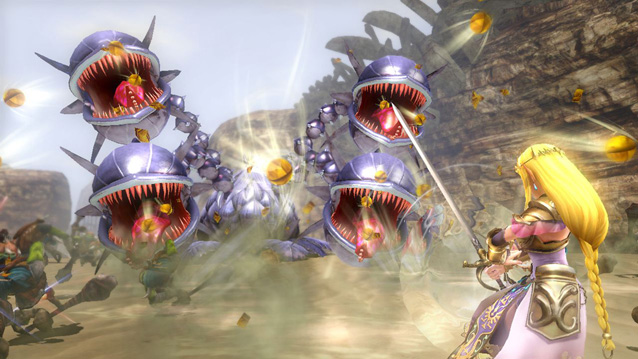
But again, your enjoyment boils down to your affinity towards long sessions of mashing X and Y, X and Y, X and Y. I find that these skirmishes act as a simple but entertaining bridge when moving to the next critical battleground. You could waste as much time as you want juggling grunts, or you could blast through and target the captains who are keeping their troops' morale high. You essentially control the flow of the game, which is a departure from most other action games in which the pace is dictated by developer-imposed barriers. The only time you really hit a wall is when battling magic-enhanced captains or boss monsters, but those are rare moments in an otherwise fluid experience.
As an introduction to the Dynasty Warriors template, Hyrule Warriors has gotten me deeply interested in the rest of Koei Tecmo's output. As a Zelda game, it honors all the little series details that players have found so endearing through the decades. As an action game, it is distilled fun.
8.5 out of 10
Hyrule Warriors was developed by Omega Force and Team Ninja and published by Nintendo. It will be available on Wii U for $59.99 starting September 26, 2014. A copy of the game was provided by the publisher for the purpose of this review.
